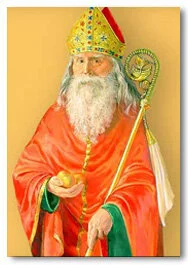Honoring Imbolc and Early Spring's Sight-Unseen Magic
Today is Imbolc.
That is not a typo. :)
If the unfamiliarity of the word “Imbolc” cues up your desire to do a quick Google search, you are not alone. Imbolc is a little known but centuries-old Gaelic festival day marking the beginning of early Spring — a day to honor the returning light and quiet warming of the Earth.
And for some of us, the discovery of the magic of Imbolc can radically change our sometimes harsh emotional experience of the cold and dark season of winter.
Before I had an awareness of the magic and mystery of the Imbolc tradition, I girded and guarded myself through the gray and dreary weeks of January and February and even March, begrudgingly bracing myself against the penetrating “wet cold” of East Coast winters. I had no felt sense, really, of what was actually taking place all around me and beneath me in the invisible but real natural world of those winter months.
The sighting of a bed of delicate but hearty snowdrop flowers in early February was startlingly incongruous and defying all possibility. While I would marvel at the beauty of the petals and greens of the little snowdrops, (the flower symbol of Imbolc, by the way) I never stopped to consider what must have been happening beneath my feet all these weeks in order for such magnificent beauty to emerge fully formed, often times even through the cold of snow.
But the ancient Celts, being as attuned to the natural world as they were, knew these early February days of winter were the halfway point between the winter solstice and the spring equinox. To the Celts, these days were a time to honor and be grateful for the mysteries of the natural world quietly at work in ways they could not see. In ancient Irish folklore, the day of Imbolc was a day to honor their goddess Brighid, whose long blue cloak was thought to warm the Earth and its creatures as seeds begin stirring in the earth and herd animals give birth to their first offspring of the year.
The unusual word “Imbolc” is thought to derive from the Old Irish meanings of “in the belly” and “budding,” in reference to the “pregnancy” of the Earth and the hidden germination of seedlings in this time.
To this day, many households in Ireland and Scotland light candles throughout the house on Imbolc to signify the center point of the dark half of the year and the Earth turning toward the light. And, of course, Christianity adopted Imbolc as St. Brigid’s Day on February 1st and Candlemas on February 2nd.
But no matter what faith or religion we are drawn to, Imbolc can be a welcome yearly reminder of the Mystery that cloaks and infuses all of life, both in the natural world and in ourselves.
As the 13th century Persian poet and Sufi mystic Rumi himself whimsically reminds us —
“And don’t think the garden loses its ecstasy in winter. It’s quiet, but the roots are down there riotous.”
~~~~~~~~~~~~~~~~~
photo credit: Catherine @cather44 on Instagram






